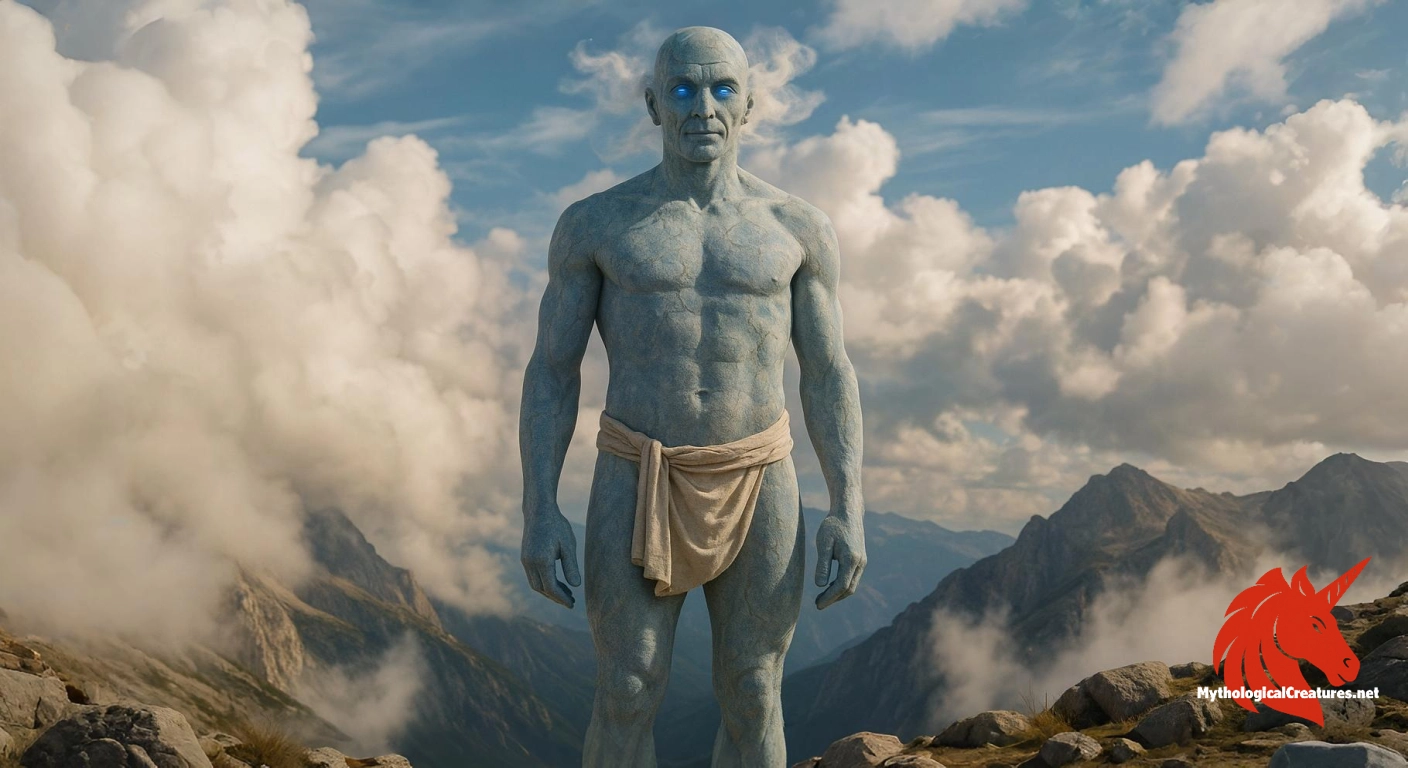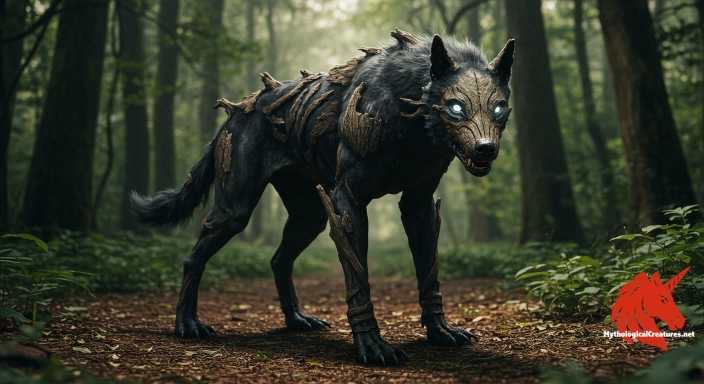Asman: Asman is the Zoroastrian divinity representing the highest heaven and the embodiment of the sky.

Asman
Asman - Asman is renowned as the first creation in Zoroastrian cosmogony and serves as a central deity representing order in the heavens.
Origins & First Encounters
Asman is revered as a primordial force in ancient Iranian spirituality, embodying the vast, eternal sky that reigns over creation. He emerges from early Zoroastrian traditions as the hypostasis of the highest heaven, a divine presence whose inception is recounted in the sacred texts. His origins are intertwined with the cosmic narrative, where he is often recognised as one of the first manifestations of the divine order. The role of Asman transcends a mere physical expanse; he symbolises an immutable principle that governs the natural world. This entity not only embodies the ethereal realm but also serves as a foundational concept in the ritual and liturgical life of early Zoroastrian communities. Deeply embedded in the language and symbolism of ancient Persia, his name resonated with both spiritual and everyday significance. The dual role of Asman—as both an abstract cosmic force and a tangible element in religious practice—highlights his enduring impact on cultural identity. Even today, his legacy continues to influence literary and philosophical interpretations of the sky as a domain of mystery and awe.
Source Texts & Tale Variants
Ancient texts, particularly within the Avesta, provide the earliest attestations of Asman, with the Vendidad highlighting him as the primeval creation that heralds the birth of cosmic order. Multiple Avestan passages attribute to him the role of the foremost entity, marking the transition from nothingness to the structured universe. In Middle Persian literature, narratives of Asman explore his celestial authority through poetic allegory and philosophical reflection. Various versions of his myth exist, each accentuating different aspects of his divine nature, from his majestic vastness to his role in the cosmological hierarchy. Although detailed storytelling is sparse compared to more anthropomorphic deities, the fragments of lore that survive form a mosaic of his influence. Certain liturgical traditions even associate specific days of the Zoroastrian calendar with his veneration, underscoring his temporal as well as spatial importance. The subtle differences found in these sources reveal a flexible and evolving interpretation that has adapted to changing cultural contexts. Each story variant reinforces the central idea of the sky’s sanctity and its role as the ultimate frontier of divine presence.
Form & Powers
Descriptions of Asman offer a poetic depiction that bridges the tangible and the transcendent. While he is less often portrayed in form, the conception of Asman as the celestial dome manifests through the imagery of an endless expanse of deep, azure blue interspersed with hints of stony solidity. Artistic traditions have attempted to capture his essence by evoking a grand, almost imperceptible boundary that separates the earthly realm from the infinite. His visage, when hinted at in symbolic art, is not anthropomorphic but an awe-inspiring sweep of the heavens that radiates light and mystery. The interplay of colours at dawn and dusk is frequently imbued with his spirit, suggesting a dynamic yet serene presence. He is conceived as both an immovable, eternal structure and a fluid canvas that shifts with the passage of time. Even in absence of a fixed physical form, the tangible quality of his stony firmament creates a visual metaphor that captures the solidity and depth of the sky. These layered descriptions have allowed devotees and artists alike to envisage Asman as a sublime integration of material and metaphysical attributes.
Regional Faces
Regional interpretations of Asman reveal a rich tapestry of cultural adaptation and local symbolism. In ancient Persian tradition, his role as the personified sky is accentuated by a dual meaning—where the sky is both an immeasurable expanse and a ‘stony’ dome that provides structure to the cosmos. In the Indian Vedic context, a similar term is employed to denote the sky, albeit with a more abstract nuance and less emphasis on physical solidity. Other neighbouring cultures have absorbed and modified aspects of his cosmology, blending indigenous beliefs with the overarching Indo-Iranian mythos. Local narratives often reinterpret his essence, aligning it with regional natural phenomena such as the vast desert skies or the crystalline clarity of mountain heavens. Over time, these diverse portrayals have enriched the symbolism of the sky, turning it into a universal emblem of divine order and mystery. The adaptability of Asman’s imagery illustrates the common human impulse to connect the celestial with the everyday. Such regional variations underscore the fluidity of myth, where the core concept resonates universally while the details are tailored to local cultural palettes.
Cultural Parallels
The figure of Asman finds resonances in numerous mythologies, establishing a network of cultural parallels that span continents and ages. His role as the personification of the sky is reminiscent of the Greek deity Uranus, whose primordial nature anchors the heavens in a similarly abstract and omnipresent form. Comparisons can also be drawn with the Egyptian goddess Nut, whose arching figure over the earth symbolises the sheltering expanse of the night sky. In Mesopotamian lore, deities associated with the firmament reflect a comparable transcendence and foundational presence. These parallel figures share a common thematic element—a divine embodiment of the celestial vault that governs the interplay between the earthly and the cosmic. Each culture adapts the symbolism of the sky to express an almost ineffable mystery and an eternal order. The mythological thread connecting these deities demonstrates the universal human fascination with the heavens. Thus, Asman not only occupies a central place in Zoroastrian thought but also contributes to a broader comparative framework of sky deities that echo through multiple cultural narratives.
Legacy & Modern Evolution
The evolution of Asman’s image from an active divine principle to a rich cultural symbol mirrors the broader transformation of myth in the modern era. In ancient Zoroastrian texts, he was an essential element of the cosmic hierarchy, a divine force whose inception marked the onset of creation. Over the centuries, his character has gradually shifted from an anthropomorphic deity with ritual significance to an abstract emblem representing the ever-present sky. In contemporary Persian language, the word ‘asman’ is ubiquitously used to denote the sky, carrying with it echoes of ancient awe and celestial majesty. Modern literary and artistic expressions continue to draw on his legacy, portraying the sky as a vast canvas of both physical reality and transcendent beauty. His myth has been reinterpreted in diverse contexts—from symbolic representations in poetry to visual motifs in modern art and cinema. This enduring legacy provides not only a connection to the ancient past but also a source of inspiration for new generations seeking to understand humanity’s place within the cosmos. Through evolving interpretations, Asman remains a timeless reminder of the mystery and wonder that the sky invariably represents.
Interesting Fact
The dual meaning of Asman's name—as both 'sky' and 'stone'—illustrates how early cultures conceived the heavens as a solid, enduring structure, a concept that continues to influence linguistic and cosmological perspectives today.
Quick Creature Info
Origin:
Features:
Associations:
Our Mythic Legendary Rating:

Also Sometimes Known As:
Habitat:
Supernatural Powers:
Physical Attributes:
Abilities:
Behavior:
Lore:
References
Discover Another Mythical Legend You May Not Have Heard Of?
Uncover the mysteries of ancient folklore and expand your knowledge of legendary beings from cultures around the world.
Dare to Meet the Penghou....
Mythical Disclaimer: The images and data on this site are derived from various historical and literary sources, but we have found that many myths often have multiple versions and interpretations across references, sometimes contradictory. As a result, these creature depictions are artistic interpretations—imaginative blends of folklore, legend, and a dash of AI guesswork. Because creature descriptions vary widely, our illustrations and accompanying information represent our best effort to honor mythology while bridging creative gaps. Enjoy these interpretations—just remember, we've done our best to respect the stories and validate available data, but in the realm of mythology, details often shift, imagination leads the way, and nothing is ever set in stone!
Curated by the Mythological Creatures Team (rev. May 2025)
